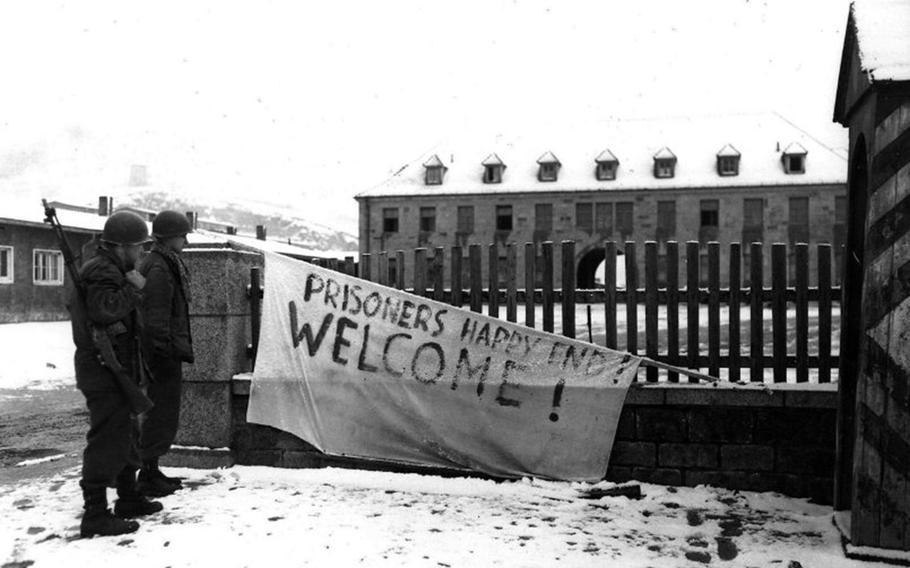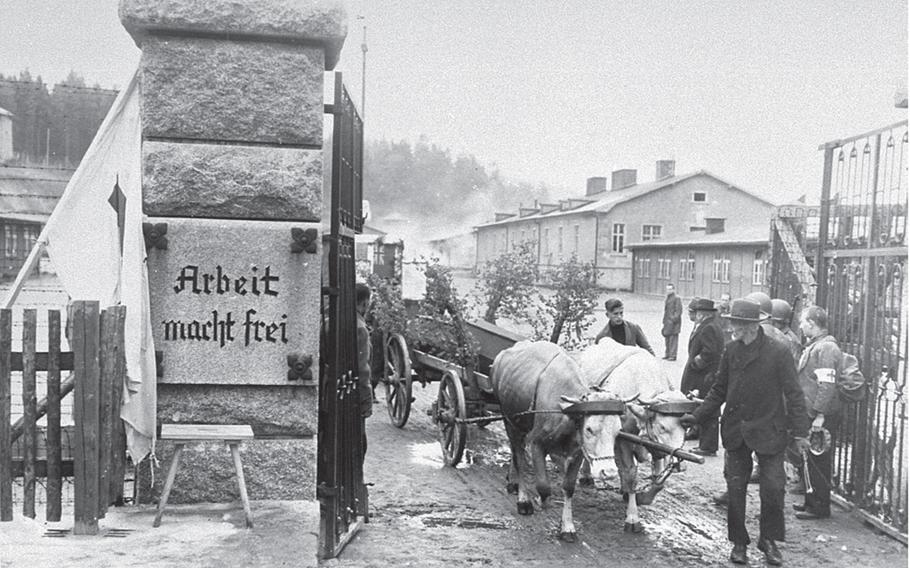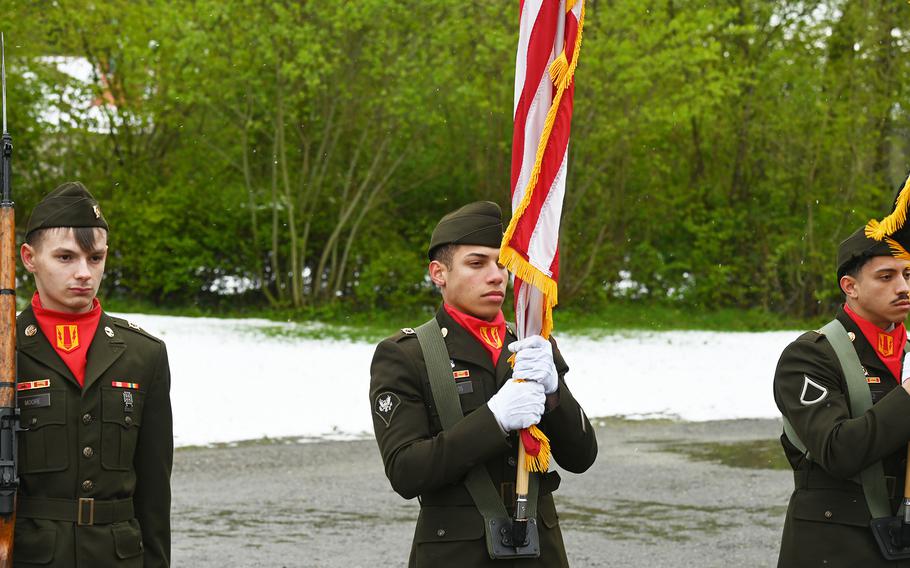
The U.S. Army's 90th Infantry Division arrived at Flossenbürg concentration camp in Bavaria, Germany, on April 23, 1945. (U.S. Army)
FLOSSENBÜRG, Germany — A wave of emotions washed over Army Spc. James Ramos as he listened to Holocaust survivors’ stories at the Flossenbürg concentration camp memorial in Bavaria.
The control specialist from the 41st Field Artillery Brigade at Tower Barracks in nearby Grafenwoehr was among a handful of American soldiers at a ceremony Sunday marking 79 years since the labor camp was liberated by the 90th Infantry Division.
“When one of the (family members) mentioned the story about his grandpa, that’s when reality hit me,” the 21-year-old said. “It’s a very painful thing to hear.”
Youp Zwolschen had recounted how his grandfather, Antoon Bink, was stripped of his identity and reduced to a number after being taken captive in the Dutch city of Rotterdam in 1944. He was transported to Flossenbürg and escaped a death march from the camp the following year.
Approximately 100,000 people from nearly every country in Europe were imprisoned at Flossenbürg between 1938 and 1945, and 30,000 perished.
Flossenbürg may not be as well-known as Auschwitz or Dachau, but it had its share of human suffering, said Dennis Forster, a research assistant at the memorial.
The camp was founded by the SS in large part because of its large granite deposits. The number of prisoners rose quickly from 1,500 in 1938 to around 15,000 at the end of February 1945.

German civilians are forced to haul coffins containing the remains of prisoners through the main gate of the Flossenbürg concentration camp in Bavaria at the end of World War II in 1945. (U.S. Army)
Prominent prisoners included Lutheran pastor Dietrich Bonhoeffer, Adm. Wilhelm Canaris and Maj. Gen. Hans Oster, who were all implicated in the Valkyrie coup attempt, which included a plot to assassinate Adolf Hitler.
The three were hung April 9, 1945 by the SS as the Americans closed in on the camp.
The ceremony Sunday began under a blanket of thick, wet snow, a reminder of the camp’s brutal conditions. About 500 people headed under a tent to escape the elements.
Col. Kevin Poole, commander of U.S. Army Garrison Bavaria, said the soldiers who liberated Flossenbürg left a legacy for the Army’s current mission in Europe.
“It resonates profoundly, particularly with what’s going on in Ukraine, where liberty and democracy are under attack,” Poole said. “The work that we’re doing at the 7th Army Training Command is a testament to what the Army and our nation stands for.”
The Flossenbürg grounds include a former Nazi watchtower, the commandant’s headquarters and a crematorium, located next to an SS execution site called the “Valley of Death,” where remains have continued to be unearthed.

A color guard from the U.S. Army's 41st Field Artillery Brigade stands at attention during a ceremony April 21, 2024, commemorating the 79th anniversary of the liberation of the Flossenbürg concentration camp in Germany. (Matthew M. Burke/Stars and Stripes)
During prepared remarks, Zwolschen said he spent over four years walking the more than 600 miles from Rotterdam to the camp as he retraced his grandfather’s journey. Bink died in 1981.
“Flossenbürg has left deep, lasting marks on my grandfather’s life,” he told the audience. “This history has become a part of me.”